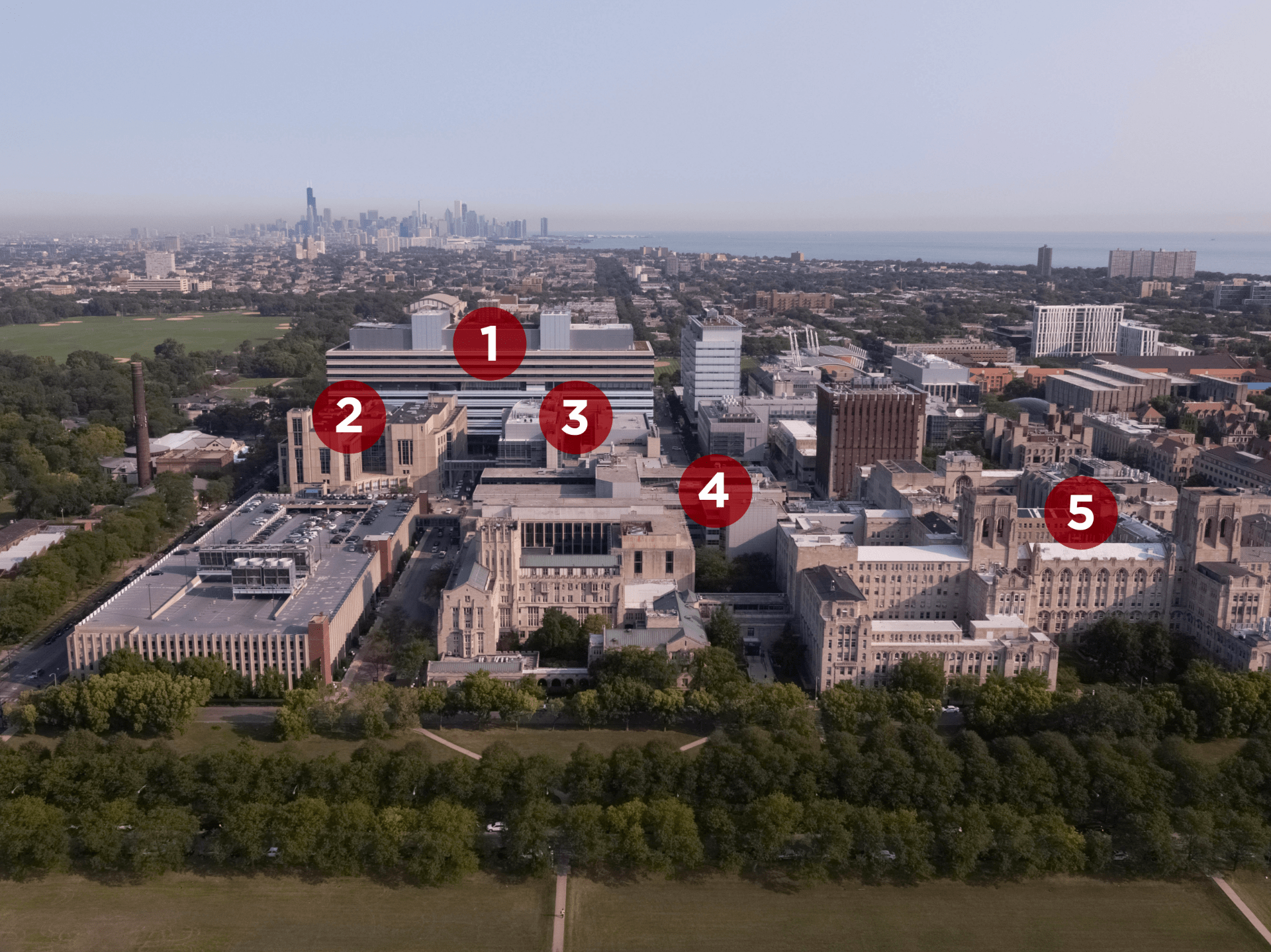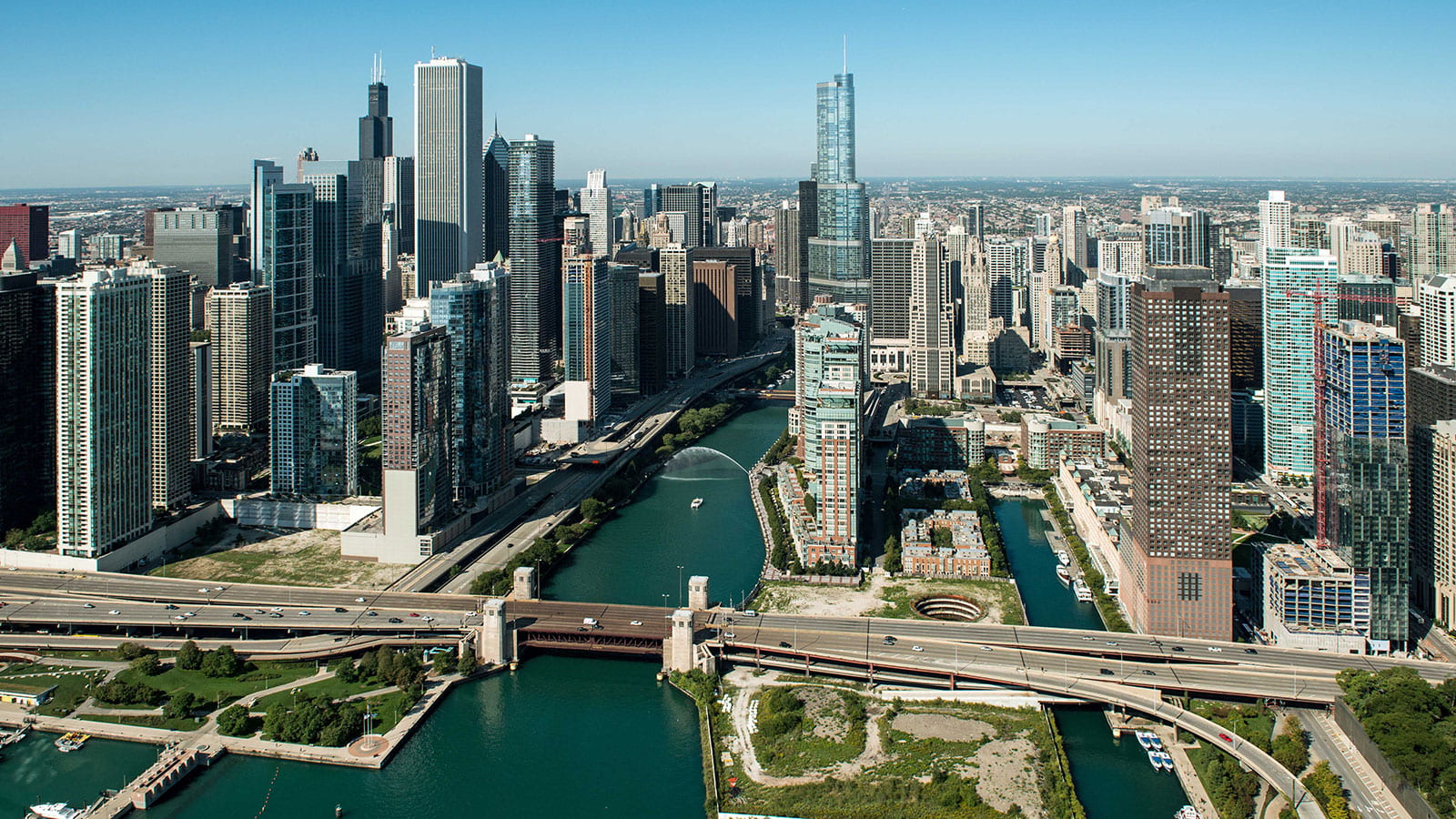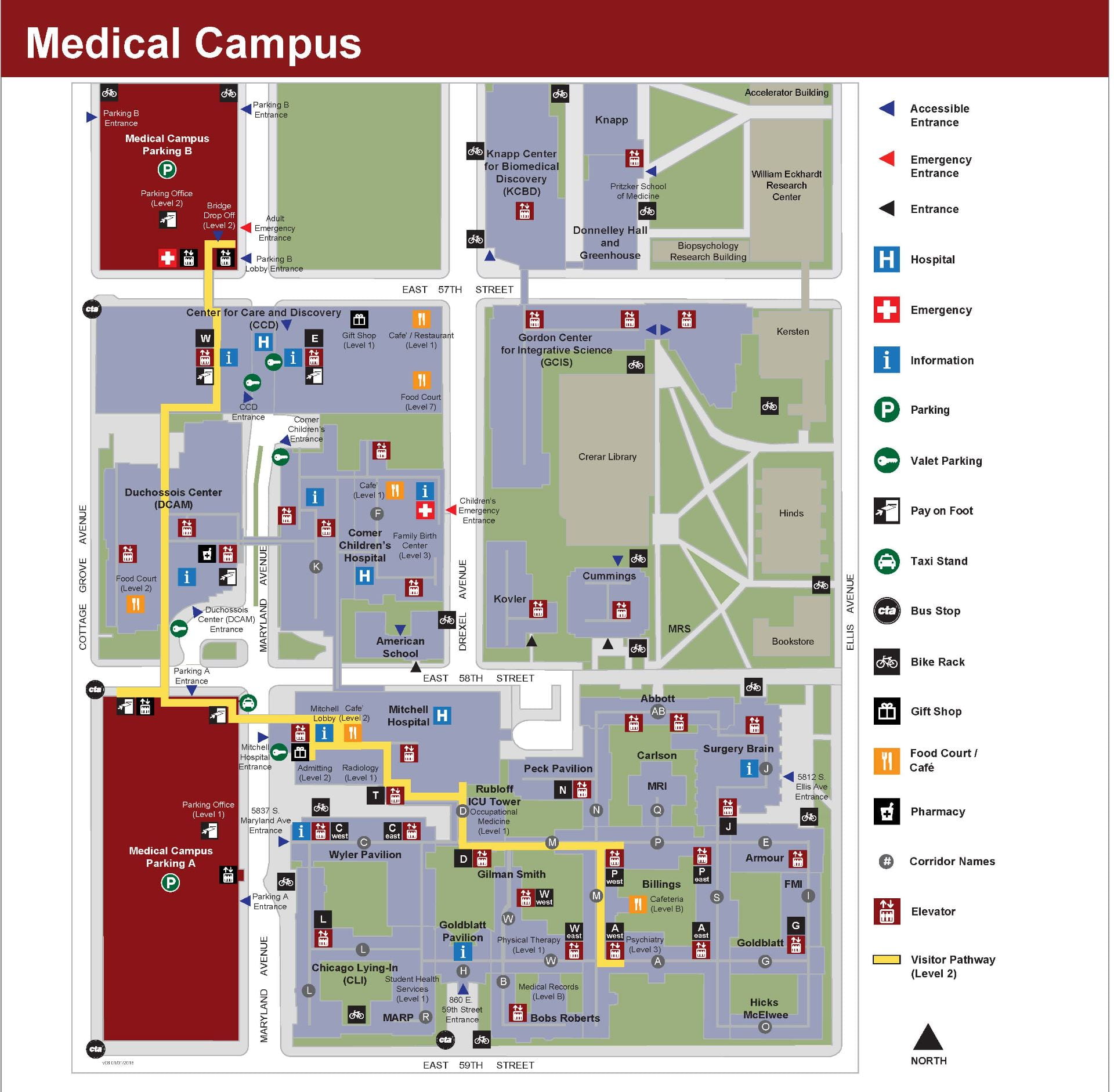University of Chicago Medical Campus
The University of Chicago Medicine is comprised of the Pritzker School of Medicine and the Division of Biological Sciences of the University of Chicago. It includes the Bernard Mitchell Hospital, Duchossois Center for Advanced Medicine, Rubloff Intensive Care Tower, the Surgery/Brain Research Pavilion, Chicago Lying-in Hospital, the Center for Care and Discovery, and Comer Children’s Hospital. More than 90 specialty outpatient clinics are part of the medical center. It is one of the larger medical systems in the Chicago area, with over 650 beds, and more than 700,000 outpatient visits per year. Many satellite clinics in community hospitals and outpatient practices also exist throughout the Chicagoland area. The Pritzker School of Medicine trains a higher proportion of academically oriented physicians than any other medical school in the country, and is highly ranked for its translational science training programs. The Division of Biological Sciences is composed of faculty-researchers in both basic science and clinical areas, including a collection of Nobel laureates, and receives over $80 million annually in research grants.

1. Center for Care and Discovery
Our flagship 10-story facility first opened in 2013 and is home to world-class medical and surgical care. The CCD includes 436 beds, 52 intensive care beds, 9 suites for advanced imaging and interventional procedures, and 23 operating rooms. The seventh-floor Sky Lobby showcases incredible views of Hyde Park, Chicago’s South Side, and Lake Michigan. Home to Inpatient Adult C/L and Psychooncology rotations.
2. Duchossois Center for Advanced Medicine
The DCAM is our primary outpatient facility. It is home to dozens of primary and specialty clinics as well as a pharmacy, more than 300 exam rooms, nearly 100 procedure rooms, surgery suites, and imaging equipment that includes PET/CT and MRI scanners. Home to all Adult Outpatient Medical Clinic rotations (Psychooncology, Primary Care, Pain, Endocrinology, Surgery, OB/GYN).
3. Comer Children's Hospital
The University of Chicago has had a children’s hospital since 1928. In 2001, it was renamed after Gary C. Comer, a local South Sider and founder of Lands’ End who made a generous gift to impact children’s care. Comer Children’s is also affiliated with La Rabida Children’s Hospital and Saint Anthony Hospital. Its pediatric emergency room sees 33,294 patients per year. Home to all Child inpatient and outpatient rotations (Peds C/L, Peds Hematology/Oncology, Peds Neurology, Developmental & Behavioral Pediatrics).
4. Mitchell Hospital
Mitchell Hospital is home to a variety of specialty care, including our post-natal mother-baby unit, advanced imaging services, physical therapy services, and in-patient units. Home to OB/GYN inpatient care.
5. Billings/Goldblatt
The most historic part of our medical center, this campus includes the Wyler, Billings, and Goldblatt buildings, which house physician offices, psychiatric and therapy care, lecture halls, and cafeterias. Houses Outpatient Adult and Child Psychiatry administrative and clinical offices.
Chicago and Hyde Park
The architecture, the lake front, the restaurants, the art scene, the night life, the parks, the museums, and (most) of our sports teams are world class. The city of Chicago lives on a residential scale, with 77 neighborhoods, each with distinct cultures, attractions, and points of interest. Students take advantage of these attractions by using the city’s robust public transportation system which includes buses, the “L” (our elevated train system), and commuter train lines.
With so much to do, it’s no wonder that Chicago has been named the #1 large city in the U.S. four years in a row!
UChicago is located in the historic, residential neighborhood of Hyde Park, just 20 minutes south of downtown Chicago. This location provides students the best of both worlds: a diverse neighborhood with a college-town feel yet easy access to everything else going on in a world-class city. Hyde Park is also home to lifelong residents, beautiful tree-lined streets, many small shops and bookstores, and thriving culture. Students can engage with all the neighborhood has to offer, including museums, restaurants, the 57th Street Art Fair, and more.



